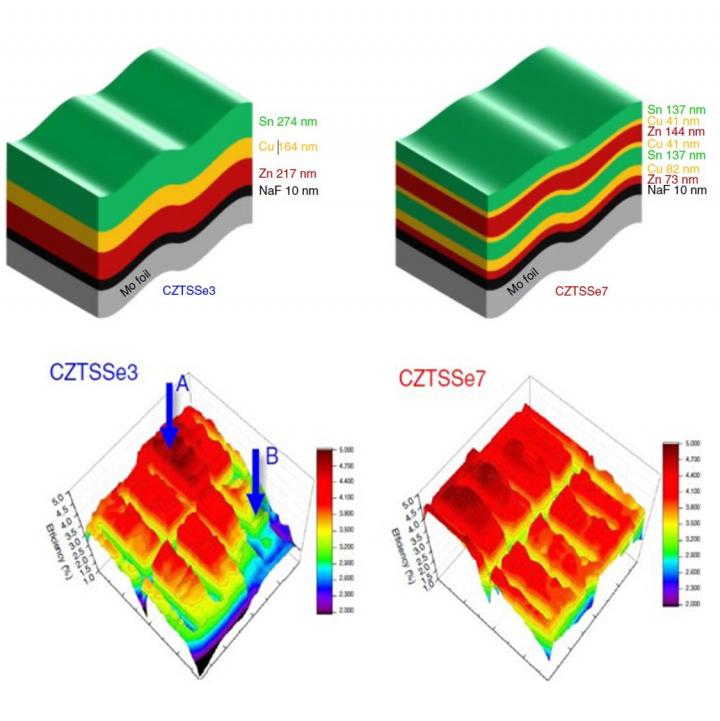Highest efficiency for flexible CZTSSe solar cell

Korean team achieves 11.4 percent photoelectric conversion efficiency using multi-layered structure
Scientists at DGIST (Daegu Geongbuk Institute of Science and Technology, Korea) have achieved 11.4 percent photoelectric conversion efficiency for a flexible CZTSSe thin-film solar cell. This is believed to be the highest efficiency for this material.
The research was carried out as a project 'Development of earth abundant, non-toxic chalcogenide absorber based flexible inorganic thin film solar cell' with support by Korea Energy Technology Evaluation and Planning (KETEP), which is affiliated under the Ministry of Trade, Industry, and Energy.
CZTSSe, a chalcogenide, it is of interest for next generation solar power technology. However, photoelectric conversion efficiency for flexible CZTSSe`s had not exceeded 10 percent due to technological issue such as the spread of impurities inside the flexible substrate and de-lamination.
One of the biggest achievements of this research, according to the scientists, is increased efficiency by changing the existing three-stack structure of CZTSSe thin-film solar cell precursor into a multi-layered structure and by improving the voltage characteristics and uniformity. Moreover, it has the problem with uniformity degradation when a large-area process is applied to thin-film solar cell, but applied process technology in this research improved not only efficiency but also uniformity.
The picture above shows: (A) Comparison diagram of the existing 3-story structure of CZTSSe solar cell (left) and the newly developed multi-story structure (right) (B) Mimetic diagram showing the differences of efficiency and uniformity between the existing 3-story structure of CZTSSe solar cell (left) and the newly developed multi-story structure (right).
Kee-Jeong Yang who led the development of process technology said: "Our research achievement has presented ways to secure the uniformity of large-area process, which can cause issues in commercialisation. We will be able to advance the commercialisation of next generation solar cell which is applicable in various fields such as building outer walls."
Senior researcher Jin-Kyu Kang, the research project manager, said: "As there is growing interest towards environment and resources are used unlimitedly these days, it is a very meaningful achievement that we have developed a thin-film solar cell using widely available, eco-friendly materials. We plan to lead the future solar cell technology using widely available materials and contribute to the development of thin-film solar cell industry.
DGIST plans to open the Research Centre for Thin Film Solar Cell based on this achievement. Its precursor design technology was published in Nature Communications on July 4.


































